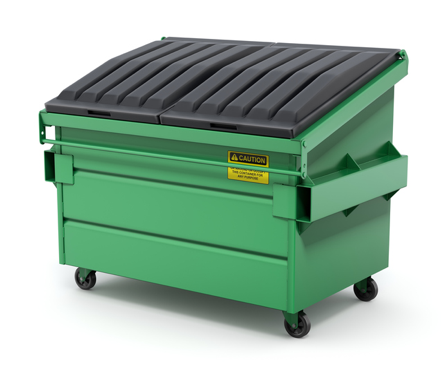When it pertains to dumpster rentals, there are several essential tips to keep in mind for reliable waste monitoring. First, pick the ideal dumpster size to stay clear of overfilling or squandering resources. Recognize the rental costs, consisting of base fees, surcharges, and potential discount rates. Know what can and can not go in a dumpster, including harmful materials, recyclables, and banned items. Prepare for ideal dumpster placement, ensuring accessibility and very little blockage. Finally, timetable logistics thoroughly to decrease disturbances to your project workflow. By complying with these guidelines, you'll be well on your means to a successful project - and there's more to explore to assure a smooth experience.
Choosing the Right Dumpster Size
When it pertains to dumpster rentals, choosing the right dumpster size is essential to ensure efficient waste management and cost-effectiveness. A dumpster that is as well tiny can bring about overfilling, causing additional rental fees and prospective penalties.
On the other hand, a dumpster that is too huge can be a waste of resources and boost rental costs needlessly. To identify you pick the appropriate size, think about the type and quantity of waste you require to get rid of of.
For tiny projects, such as cleaning a single space, a 10-15 backyard dumpster may be sufficient. For bigger tasks, like construction or restoration, a 20-30 lawn dumpster might be required.
Additionally, take into consideration the room offered for dumpster positioning and any local regulations regarding dumpster size and positioning. By picking the appropriate dumpster size, you can ascertain a smooth and cost-effective waste management process.
Understanding Dumpster Rental Costs
Having chosen the ideal dumpster size, the following step is to comprehend the expenses associated with dumpster services. The rental period, dumpster size, and place are vital factors that affect the overall cost
Typically, dumpster rental business charge a base fee that includes a particular rental duration, usually varying from a couple of days to a week or more. Additional fees may look for prolonged service durations, obese dumpsters, or unique needs like same-day delivery.

It's necessary to ask about any kind of extra expenses or additional charges prior to settling your rental arrangement. Be sure to ask about the weight capacity and any type of limitations on the kinds of materials that can be gotten rid of in the dumpster.
Understanding these details will certainly aid you budget plan accurately and stay clear of surprise costs Some dumpster rental business may additionally offer price cuts for long-lasting rentals, mass orders, or commitment programs, so it's worth discovering these options as well.
What Can Go in a Dumpster
The dumpster's contents can substantially affect the rental experience, and comprehending what can and can not enter a dumpster is vital for a successful project.
Generally, dumpsters are made to hold non-hazardous materials such as home garbage, construction debris, https://6724e431330fb.site123.me and lawn waste. This can include products like busted home appliances, furnishings, drywall, roofing products, and organic matter like fallen leaves and branches.

Additionally, dumpsters can fit heavy materials like concrete, asphalt, and dirt, making them optimal for renovation and landscaping projects It's additionally usual to get rid of recyclable materials like cardboard, paper, and plastic in dumpsters.
However, it is very important to consult the rental business ahead of time to confirm they approve these products and to understand any specific standards or restrictions
Prohibited Products and Materials
Embedded in the policies and policies of dumpster rentals are stringent standards regulating what can not be gotten rid of in these containers. Recognizing what things are prohibited from being taken care of in a dumpster is essential to preventing additional costs, penalties, or perhaps discontinuation of services.
- Hazardous waste, including batteries, electronics, and chemicals, present environmental and wellness risks if not dealt with properly. Liquids, consisting of paint, oil, and cleansing materials, can pollute soil and groundwater if not managed correctly. Flammable products, such as lp tanks, fireworks, and warm ashes, can trigger fires and explosions. Toxic materials, including asbestos, lead, and clinical waste, need special handling and disposal to stop damage to human beings and the environment.
Effective Dumpster Placement Strategies
Most dumpster rental projects call for cautious preparation, and an essential aspect of this preparation is determining the ideal placement of the dumpster at work site.
The place of the dumpster can notably influence the efficiency and safety of the task. It is essential to take into consideration the accessibility of the dumpster, ensuring it is conveniently accessible for loading and unloading particles. Furthermore, the dumpster should be positioned in a way that lessens blockage of pedestrian and automobile traffic.
When picking a location, think of the closeness to the workspace, considering the distance and course that workers will require to require to throw away waste.
It is additionally essential to verify the dumpster is placed on a degree, company surface area to prevent it from tipping or changing throughout use. In addition, take into consideration any type of local regulations or homeowners' organization rules that might impact dumpster placement.
Scheduling and Logistics Essentials
Five crucial factors need to be taken into consideration when organizing and collaborating logistics for dumpster rental projects.
From guaranteeing prompt delivery to helping with effective waste removal, a tactical routine is essential to the success of your project.
When preparation your logistics, make certain to take into account the adhering to essential factors:
- Project Timeline: Straighten your dumpster rental duration with your job routine to assure you have the essential devices when you require it. Delivery and Pickup: Coordinate with your rental company to set up practical delivery and pick-up times that minimize interruptions to your workflow. Space and Accessibility: Verify the dumpster can be securely and conveniently placed on your website, with sufficient space for filling and unloading. Local Regulations: Familiarize yourself with regional statutes and allows required for dumpster placement and waste disposal, avoiding potential penalties or penalties.